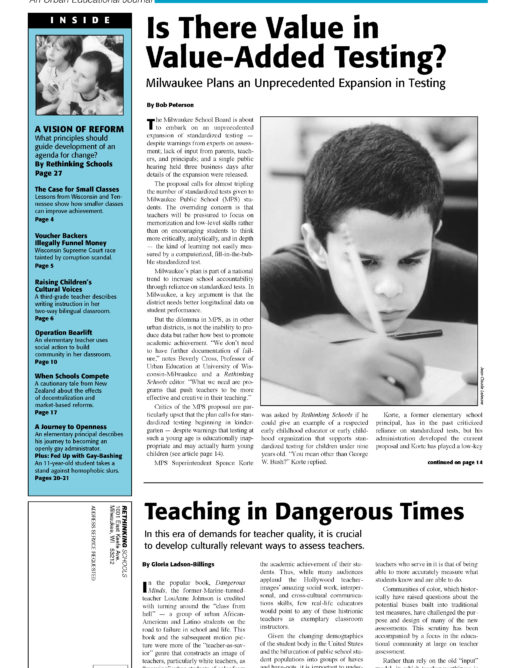Preview of Article:
The Case for Smaller Classes
Following is an interview with Alex Molnar, director of the Center for Education Research, Analysis, and Innovation at the University of Wisconsin-Milwaukee and one of the principal investigators of Wisconsin’s SAGE class size reduction program. Molnar was interviewed by Barbara Miner of Rethinking Schools.
Question: You are nationally known as a leading proponent of reducing class sizes. Why do you think this issue is so important?
Answer: Small classes clearly increase student achievement in the primary grades. We have 15 years of research evidence that illustrates this, from Tennessee’s Student Teacher Achievement Ratio (STAR) study to Wisconsin’s evaluation of its Student Achievement Guarantee in Education (SAGE) program.
The evidence is very, very clear. In the primary grades, when students are in classes of around 15 students per teacher, they are going to gain two to three months in academic achievement over their peers in larger classes.
Can you briefly explain the Tennessee STAR study?
The Tennessee STAR study is one of the largest educational experiments in this century in the United States. And I use the word “experiment” in a scientific sense, in that the STAR study featured random assignment of students and teachers and carefully controlled experimental conditions.
The study began in 1985 with a group of kindergarten students who were in small classes through third grade. Between 8,000 and 10,000 students participated in STAR.</p

